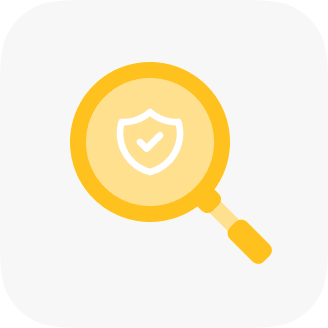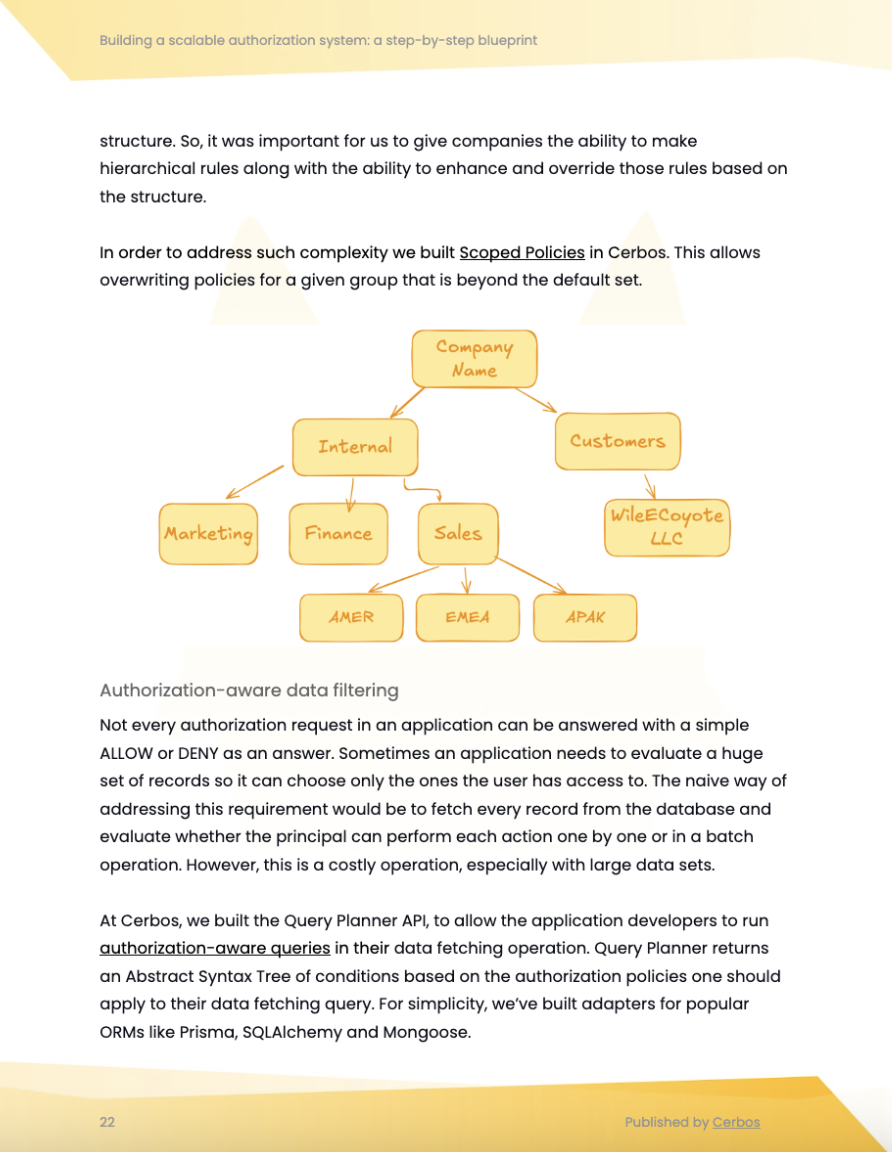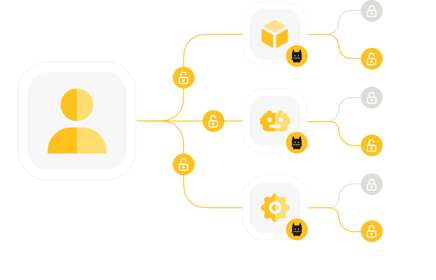How to adopt externalized authorization
Adopting externalized authorization is an architectural change that requires careful planning. Our ebook provides a structured, 10-chapter approach to navigating this transformation.
Adopting externalized authorization is an architectural change that requires careful planning. Our ebook provides a structured, 10-chapter approach to navigating this transformation.
Practical steps from foundational planning to Proof of Concept rollout and establishing governance
Frameworks, policy examples, code samples, and lessons learned from guiding hundreds of teams through externalized AuthZ adoption.
Authorization requirements, different role types & their implementation, data sources, ownership matrix, and everything about PDP, PEP, and PAP.
Instructions to stand up a minimal PDP and PEP, author and test policies with real data, choose deployment and enforcement models.


Learn how to identify your resources, resource types, actions (view, create, update, delete, etc.), principals (who or what needs to perform these actions), and roles. Partner with product managers, business analysts, security engineers, and compliance teams to create a permission model that drives your externalized authorization implementation.
Topics covered: Resource types, principal modelling, condition mapping, permissions as a "job to be done", permissions matrix, stakeholder collaboration
Authorization policies need context to make informed decisions. See how to map every required attribute to its authoritative source (IdP, directory, application database, microservice, CMS). Discover how to pinpoint every principal, resource, and environment attribute in your permissions matrix and define the technical mechanism for your PDP to retrieve it.
Topics covered: Principal attribute mapping, resource attribute mapping, environment/context attributes, identity provider integration, directory service connectors, data freshness


Decide which team will own & manage authorization policies and select the tooling.
Stand up a minimal PoC, feeding it external policies and real data from your identified sources to validate decision accuracy, performance, and overall feasibility before scaling. We’ll guide you through selecting a PDP, authoring a test policy, building a PEP, and validating your setup.
Topics covered: Policy as code, policy ownership, policy administration, PAP tooling, Policy Decision Point (PDP), PDP types, Policy Enforcement Point (PEP), PEP integration, proof of concept
You’ll learn how to choose the correct deployment model and enforcement layer for your context. We’ll cover the different types of deployment models and enforcement layers available, along with the pros and cons of each. Then, we’ll help you understand which works best for your needs.
Topics covered: Matching PDP types to environments, enforcement layers, API gateway, Edge enforcement, Service Mesh Data Plane enforcement, application code / business logic enforcement, data layer enforcement


We’ve compiled a thorough list of NHI security vendors that can help you close this security gap before attackers make use of it.

Begin with a single, well-defined resource and a limited permission set to gain hands-on experience, refine your policies, and build team confidence. As you onboard additional resources, identify common roles (like administrator, editor, viewer) and introduce derived or abstracted roles based on user attributes and context.
Topics covered: Static roles, derived roles, PDP calculation, PEP calculation, implementing derived roles
Establish core policies in a centralized repository with the right tooling, defining authoring best practices, automated testing, and CI/CD integration, before rolling out to wider teams. Put a versioning and iteration strategy in place so you can safely test, deploy, and evolve policies against production data without service disruption.
Topics covered: Centralized policy store, base policies, policy CI/CD pipeline, policy versioning, testing policy changes, change management process, rollback planning


Implement scalable, secure, fine-grained authorization for both human and non-human identities.
